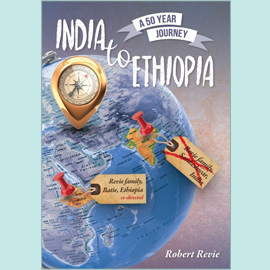Japan. A country of innovation, technology, and yet superstition. The old ways of spiritism mingle with modern methods of production. The people are resilient. Multiple natural disasters have trained them to accept their fate with stoicism. Earthquakes, volcanoes, typhoons and tsunamis come unexpectedly, and often with deadly force. Yet the people continue, overcoming with proud determination.
When the Gospel of peace, hope, love and forgiveness through Christ is preached, it is met with scepticism or outright rejection. The existence of the One True God, Creator of heaven and earth, is a foreign concept to be dismissed. Their superstition regarding the unseen world, combined with a desire to worship ‘something’, has resulted in a confusing mixture of religious darkness. Yet the light of God has shone into the dark place, and the love of Christ has softened many a hardened heart.
At the turn of the 20th century, a Japanese student called Mr Kasamatsu went to California. He first heard the Gospel preached in the open air by an assembly in Sacramento, and later confessed his faith in Christ one morning while observing the Breaking of Bread. Upon his return to Japan, he began to effectively witness to others concerning His Saviour. One convert was Dr Tsukiyama, an eye doctor. In studying the Word of God with brother Kasamatsu, the two of them understood the simplicity of gathering in the name of the Lord Jesus Christ and, as a result, the first Japanese assembly commenced in brother Tsukiyama’s home in Kanda, Tokyo, in 1910.
In 1930, the first missionaries from an assembly in England arrived: Mr and Mrs Thomas Hay. I have vivid memories of brother Hay when he visited Vancouver Island, Canada during the 1970s. He was a Christian gentleman, with a solemn way of preaching, but a quick wit in the home. The Hays settled in Kobe, and saw a small assembly started in that area. In 1931, Mr Robert (Bobbie) Wright joined them, first taking up employment as a chemist, but soon devoting his energies to language study and the Lord’s work. During this period, there was an outstanding convert: Dr Ishihama, a dentist. From the beginning, brethren Hay and Wright printed Gospel tracts and booklets, and this work developed when Mr Wright moved to Tokyo.
In 1938, Mr T Hewitt was commended from Northern Ireland, and joined the brethren in Tokyo. Little did he know that he would become a martyr for his faith in Christ during World War 2. As the war years drew on, liberty was seriously curtailed. Dr Ishihama had already suffered nine months’ imprisonment for preaching in the open air against the ‘Sun Goddess’, the chief deity of Shintoism. Spies were planted in the meetings and, when war broke out in 1941, all the leading brethren were arrested. Several spent the whole war behind bars. Mr Wright was interned in Yokohama, and repatriated after a year. Mr Hewitt, however, was imprisoned in Tokyo, and died a few months later. His story is documented elsewhere, but his faith didn’t fail during maltreatment.
Those were dark years but, even at such a time, God graciously worked. There was one particularly significant case of conversion: Mr Noshiro, who later became an evangelist, and was held in high esteem until his recent homecall. I was privileged to work alongside him several times, and can testify to his zeal even in later life. He loved the Gospel, and travelled extensively, seeking to strengthen the assemblies throughout the country.
With defeat in WW2 came Japan’s greatest opportunity to hear the Gospel of the Lord Jesus Christ. During the next decade, missionaries from all over the world arrived, and the Gospel spread like wildfire throughout the country. Some of the original assemblies recommenced, and new ones were also started. Dr Ishihama was released from prison, and went to Kyushu, the southern island, where he saw a number saved and an assembly formed. It was during this time that brother and sister Leonard and Agnes Mullan arrived from Northern Ireland. Mr Mullan’s story is well documented, and the reader is encouraged to get a copy of his biography.
One of the most notable of these new missionaries was Mr James Currie. He arrived in 1949, followed by his Canadian bride, Edythe, in 1950. Until very recently, brother Currie remained fully active in the Lord’s work in Japan. His teaching ministry played a major role as the assemblies matured, and more than one brother has told me how they learned the truth of the local assembly from him. Mr Currie has also left a legacy of excellent books, having written several lengthy commentaries, and translated and published dozens more. Even though present health issues restrict him, he continues to have an active role with the ‘Evangelical Publishers’. Mr Currie took over this work many decades ago from brother Wright, and brought it to its present form as a very professional publishing company. Today, brother Kitajima undertakes the challenging task.
All these new workers had to commence the grind of language studies. Following the war, opportunities were tremendous, and huge crowds would gather at the open-air meetings. Sadly, there were all too few able to preach the Word in the language of the people, but large quantities of literature were distributed as supplies became available.
However, although the reports of the ‘early days’ are inspiring, this century is different. As the nation has developed economically, the people have become rich, increased in goods, and see no need to honour their Creator. Where 10,000 tracts might have been previously distributed, I can only hand out 100 on New Year’s Eve in front of a Shinto shrine, and hardly anyone stops to listen when the Gospel is preached on the street.
When language proficiency reached a certain level, and with more missionaries arriving each year, the workers began to spread out from the metropolis of Tokyo. (Space does not permit mention of all those who laboured so diligently; their record is on high.) The Curries first moved to the little assembly in Fuchu, a suburb of Tokyo, and later worked in Yokohama. The first convert in Yokohama was a man who attended the Gospel meeting because he thought they were communists! In 1959, an assembly commenced in Yokohama. Brother Currie’s love for these two assemblies has never waned, and I have also spent many happy times around the Scriptures in both locations. The believers are active with several short Gospel and ministry series each year, and it is a privilege to share in their large annual conferences. 1959 was also the year that Mr Caldwell of New Zealand entered the most northern island of Hokkaido. During the previous year, radio broadcasts had beamed in the Gospel message, but then brother Caldwell was able to commence Gospel meetings in a rented hotel room in Hakodate - a port in Hokkaido. The four-hour boat journey from his home wasn’t easy, but the Lord began to work, and the result is an assembly that remains to this day.
During a Gospel series in Hakodate, a lady stayed behind to discuss the message. She said that Jesus was undoubtedly the Son of God, and that she knew she would be eternally saved if she trusted Him. But, to my shock, she said she could not trust Christ because of a promise she had made to her husband. When their house burned to the ground a few years previously she escaped, but her husband burned to death. She vowed as she bent over her husband’s charred corpse that she would make an offering for his soul every day she lived. And she knew that if she trusted Christ her idolatry would have to stop. So, she chose to reject the Saviour, and left. I have learned that such cases are numerous. But on another occasion, a young man saw a notice for our Gospel meetings and began to attend. He was so disillusioned with life, but clung to the message of love and hope in Christ. He continued to attend meetings until he was saved, baptised, and added to the assembly. His zeal gives us delight every time we visit.
One of the first converts of those early days in Hokkaido was a lighthouse keeper. Brother Caldwell stopped to visit him as it began to rain, and asked if he could borrow an umbrella. With a promise to return the umbrella, Mr Caldwell left the lighthouse keeper a tract. When he returned the umbrella, the keeper informed him that he had trusted Christ through reading the Gospel paper! That man eventually left the lighthouse and became an evangelist, seeing an assembly established in a small city called Takikawa, about six hours away by train from Hakodate.
I have visited Takikawa often, and recall a Gospel meeting there one frigid February evening. Only eight people were present, including a 75-year old unsaved man who was the brother of a believer. When I returned ten months later, I inquired whether the gentleman ever came back to hear the Gospel. There was a puzzled look as they replied that he had been baptised the previous month, and was now in assembly fellowship! When I asked when the man was saved, the matter-of-fact answer was “Oh, the last time you were here.”
In the early 1990s, through the efforts of believers from Hakodate, and a brother who moved from a distant assembly, a Scripturally-gathered testimony was established in Sapporo, the capital of Hokkaido. By 2007, there were many young men in the assembly there, and I felt led to move to that area. It meant leaving Tokyo, where we had spent the previous five years, and was a major adjustment for our family. However, it was a joy to labour with all the young believers in extensive tract distributions, as well as opening the Scriptures with them. A second hall was opened near the large university, where another regular Gospel meeting commenced, and our neighbours started attending. But disaster struck when my wife took seriously ill. To our dismay, our neighbours said they didn’t want to come back to the meetings. One said “If your God does that to His servants, then we don’t want Him.” Those were dark days, but the darkness was punctuated by the salvation of more than one soul during that time. It is difficult to describe the joy of seeing a man being baptised in the sea, confessing Christ as Saviour.
With the passage of time, the believers saved in those early days are being called Home. However, although notable Japanese evangelists are being buried, God is carrying on His work. It isn’t sudden, but it is sure. Young men are being raised up to fill the ranks; both in the assembly as elders, and in the work as evangelists. One of the older preachers, still active in his seventies, wanted to be an example to younger men, so he moved to a new area. He told me himself that he was shocked to see how God worked quickly, and a new assembly was formed within a few years. Although it comprises only a handful of believers, there are enough to carry out the precepts of Scripture.
At present, there are dozens of Scripturally-gathered assemblies throughout the country. Most are small, but steadfast. They faithfully gather, keeping themselves unspotted from the world. The culture is oppressive, and spiritual darkness abounds, but God still has His witness in Japan.
It is a privilege to labour where others have first toiled. “I sent you to reap that whereon ye bestowed no labour: other men laboured, and ye are entered into their labours” (Jn 4.38).
- Elton and Ruth Fairfield









